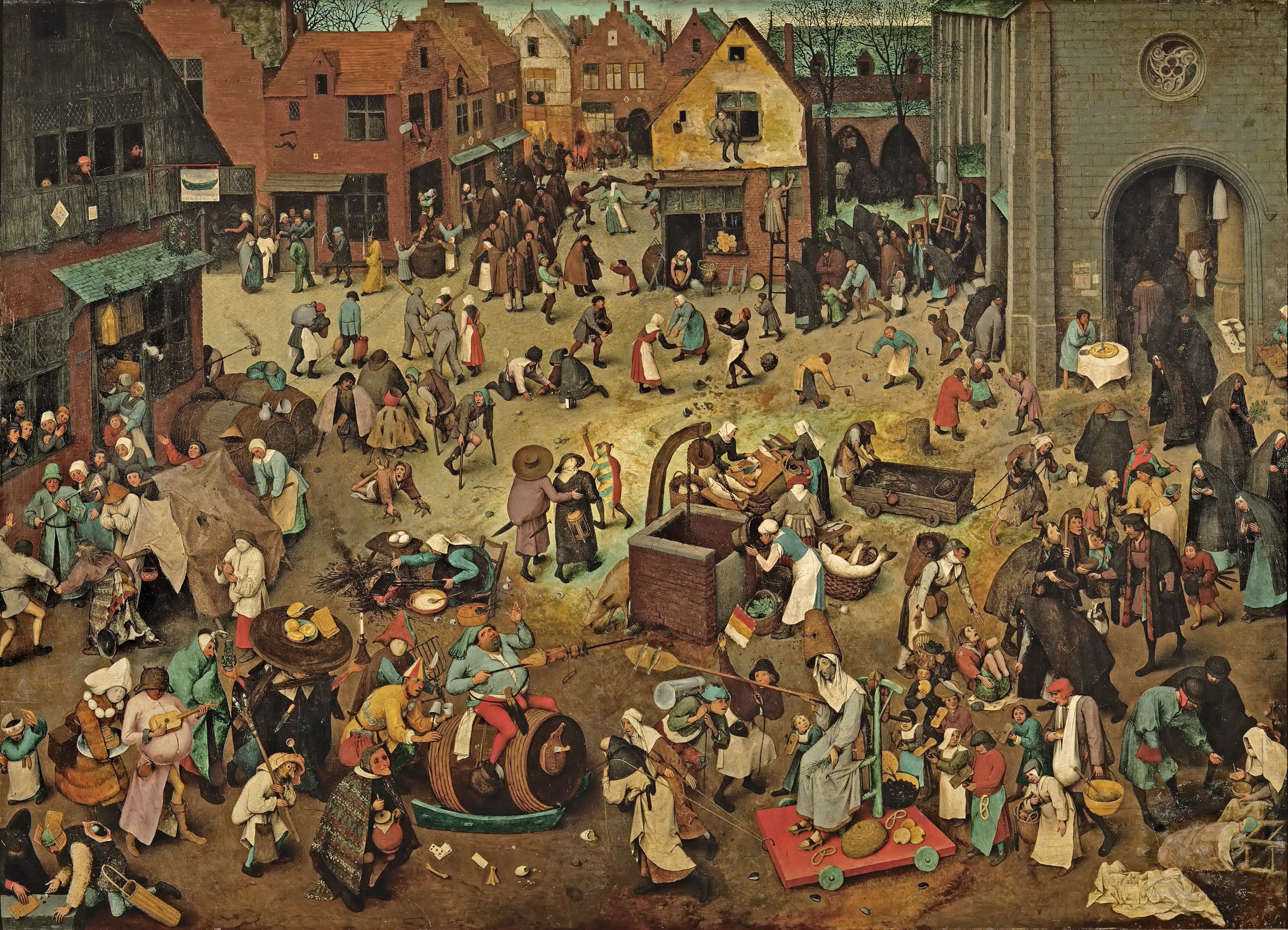Anti-structures
by Cristóbal
Eu queria
Que essa fantasia fosse eterna
Quem sabe um dia a paz vence a guerra
E viver será só festejar
I yearn
For this vesture to abide
If sooner peace overcomes the tides
Life will be only celebration
— Baianidade Nagô

– Pieter Bruegel, The Fight Between Carnival and Lent
Forty-seven days before Easter, anticipating Lent, carnaval begins. Throughout Brazil, samba schools congregate to parade allegorical floats to the sound of densely referential narratives backed by a syncopated swing. These “samba-enredo” are syncretic myths originating in African traditions, brought by the slaves from Moçambique, Congo, and Angola who worked in sugar cane plantations, combined with the histories of oppression and liberation on this side of the Atlantic. It is a moment of celebration for the communities that are symbiotically entwined with the schools of samba. After a year of preparation in their own communities, the harmony of the group is put up for display.
Beyond the state-sponsored sambódromo, the streets have their own manifestation—trucks, acting as impromptu mobile stages, meander through the neighborhoods of São Paulo, Rio de Janeiro, Salvador, or Olinda. Live percussionists resonate over clipped sound systems, blaring samba, MPB, reggae, or metal. The costumes are saturated and brilliant. Sequins and glitter abound. The body is elevated and exposed—pecs are flexed, asses shake, and tongues are thrust. Sweat, beer, and piss flow along the street gutters, washed away by the afternoon rain in a cycle of cleansing. (Or, less poetically, the working classes who cannot afford to forgo a day of labor and pay.) These are the “blocos de rua”, ambulant spaces of euphoria.
If these costumes were worn year round, if this space of exception, of ecstatic sociability, were not cutoff by the moral demands of lent, or those of labor and productivity, would life be pure celebration? What is the role of carnaval, or of the carnival we trace back to the Renaissance, or further back to Roman Saturnalia? A primal chaos undergirds order, giving it the energy which it feeds off of? Is it an escape valve for those pressure of a socially-ordained life, ultimately sustaining it? Or is the inversion of power a message sent to the rulers, reminding them of the contingency of their reign? Is carnival an ecological technique (explore/exploit), a brief suspension of rules that enables rethinking social codes, a form of simulated annealing that allows for adaptation? Or is its exuberant beauty the central tenet of our political economy.
What is certain is that, counter to a monotonic view of order and progress, an anti-structure oscillates into view. Seriousness precludes a possibility of change, and even the most authoritarian codes need space for adaption. Every system has a gap (the Real) that is unaccounted for and eventually rears its head when repressed for too long. Carnival offers us characters who stabilize this process: the rogue’s subversion of rules, the clown’s playful mocking of language, and the fool’s stupidity which estranges us. In aggregate, a societal whole emerges, a trans-individual dance between order and chaos.